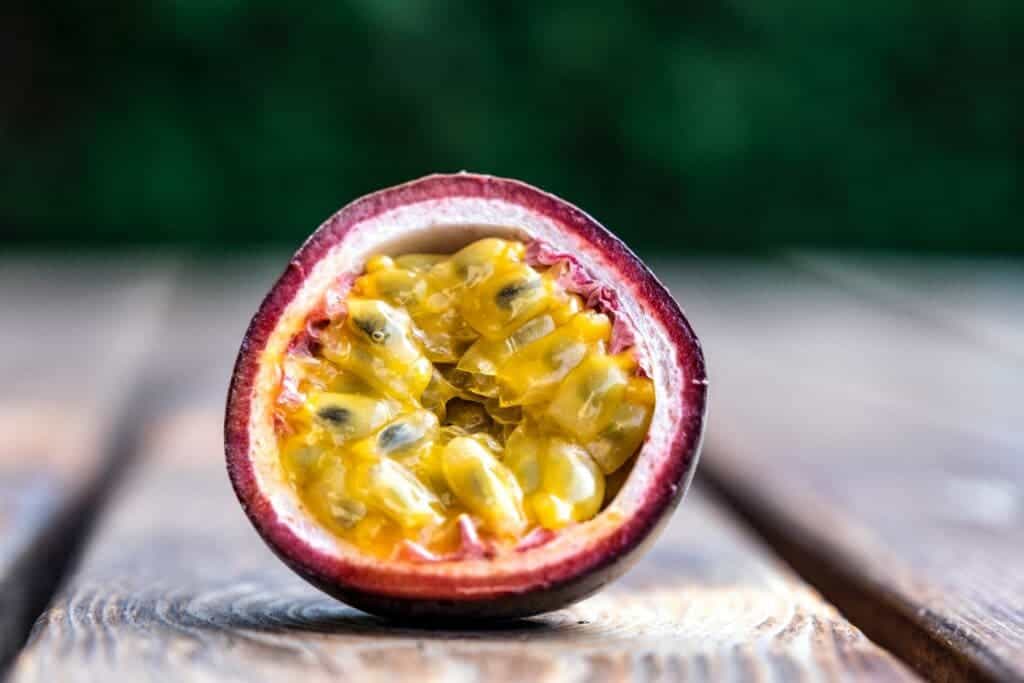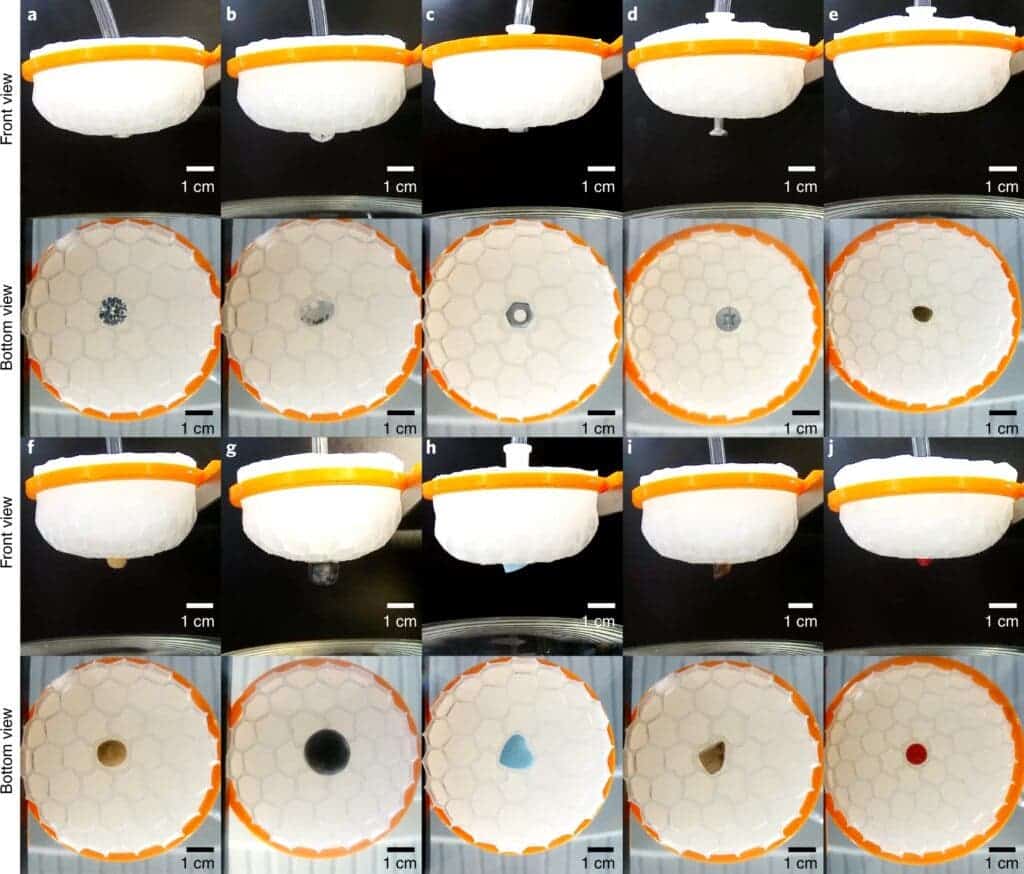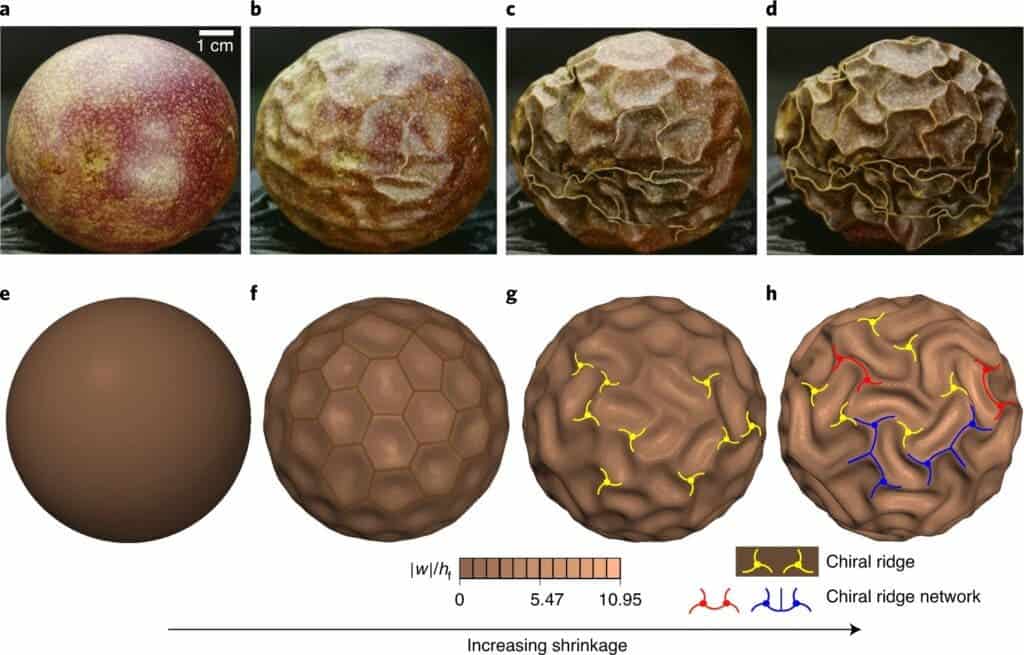Passion fruit is known for being loaded with antioxidants and vitamins and it’s also rich in fiber and potassium, which makes it a good food for reducing the risk of cardiovascular ailments. But researchers had a completely different use for it altogether.
A team of researchers at Shanghai’s Fudan University and Tsinghua University in Beijing used passion fruits to get inspiration for new robot designs. In a new study, the team proposes that wrinkling patterns in passion fruit could serve as a foundation for the design of future robots and nanodevices that can clean space debris.

The authors identified a unique chiral wrinkling pattern (an object whose image does not superimpose on its mirror image is called chiral) on the surface of dehydrated passion fruits. Inspired by the pattern, they created a robotic device that can be used in the future to clean space debris. The device could work as a robotic object grasper that could be employed at places that are not safe or suitable for humans.
Learning from the morphology of a withering passion fruit
During the study, the researchers observed the different patterns that emerged on a withering passion fruit and tried to re-create the same on a soft-silicone ball. They noticed that as the fruit gets old and dry, first its shape becomes similar to a football whose design comprises various hexagons and pentagons. Then a complex network of deep ridges is formed as the fruit withers and dehydrates further.

The network of ridges forms a chiral pattern, meaning that the image of the pattern can not superimpose on its mirror image. This is an important property as the wrinkling chiral patterns on the silicone ball allow it to function like a gripper. The gripper device contains soft silicone, a movable lifting frame, and an air channel. While explaining the working principle of the gripper system, the authors wrote in the paper,
“The lifting frame descends to make the gripper approach a target. When the hexagonal network on the curved surface touches the object, the contact perturbation triggers the hexagonal-to-chiral topographic deformation that can well fit with the targeted shape. Then, the exhaust device begins to pump air. With increasing air extraction, the chiral topography can lock the object tightly to achieve a stable grasp. Finally, the object leaves the desk when raising the lifting frame. When the pressure difference is restored, the chiral topography elastically reverts back to hexagonal networks, releasing the grasped object.”
By adjusting its chiral pattern, the researchers were able to grasp objects like soybeans, screws, heart-shaped candies, nuts, and glass pieces of varying shapes using the gripper. They also tested the device on materials like diamonds and successfully demonstrated that the gripper was able to grasp a diamond from different sides and angles as well.
This is a promising first step, and researchers have big plans for their idea.

Passion fruit-inspired devices can save us from danger
The researchers claim that such a device could help us clean space junk, a growing problem that might soon lead to uncontrollable chaos in Earth’s orbit. According to NASA, Earth’s orbit is cluttered with over 27,000 pieces of space debris, and some of these pieces could be even traveling at speeds of 15,000 mph (27,000 km/h). If one such object would hit an active satellite or a space rocket, the outcomes of such a collision would be devastating. Plus, we’re putting more and more satellites into space, and we don’t really have a reliable way to clean out the compounding space junk.
The passion fruit-inspired gripper could declutter our Earth’s orbit and make it much safer than it is now with all those 27,000 pieces floating around. First author and professor at Fudan University, Xu Fan told SCMP:
“A robotic arm equipped with the sphere grasper could collect small space debris with high precision. On Earth, it could pick up dangerous particles such as explosives.”
The researchers now look forward to creating more such robotic devices with better grasping ability. They believe that by incorporating other types of material and further understanding the symmetry in withering passion fruits, they might also develop devices that could take the shape of anything ranging from a cat’s paw to a human hand.
The study is published in the journal Nature Computational Science.


